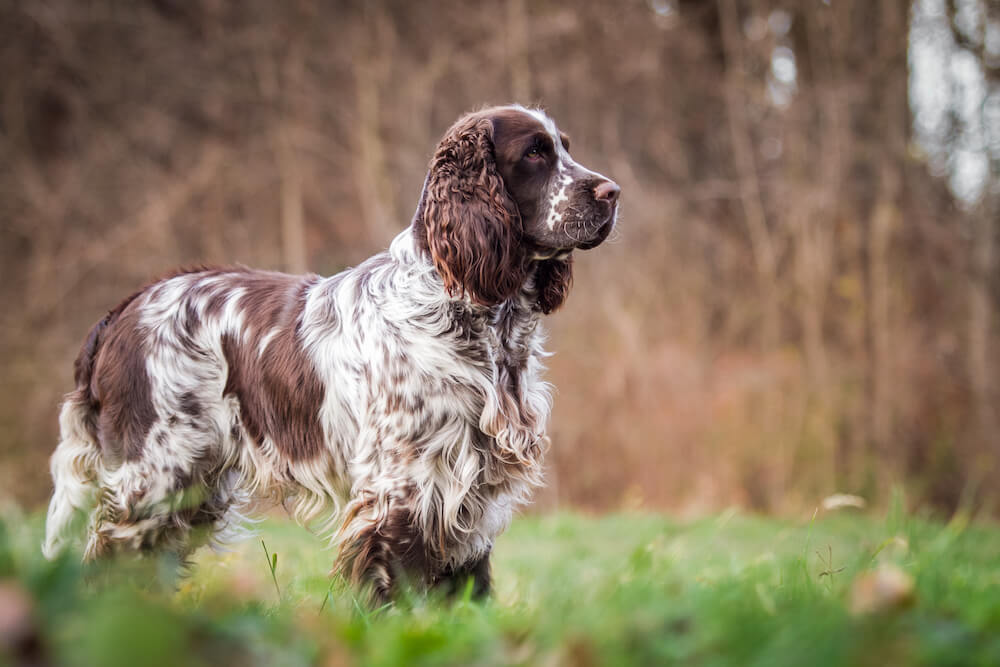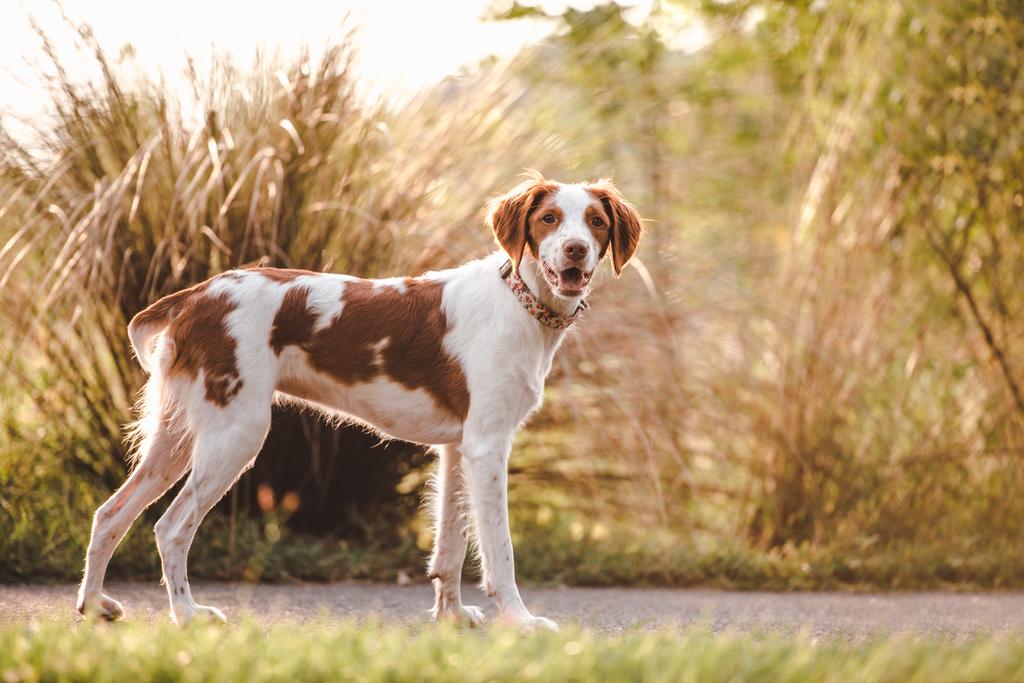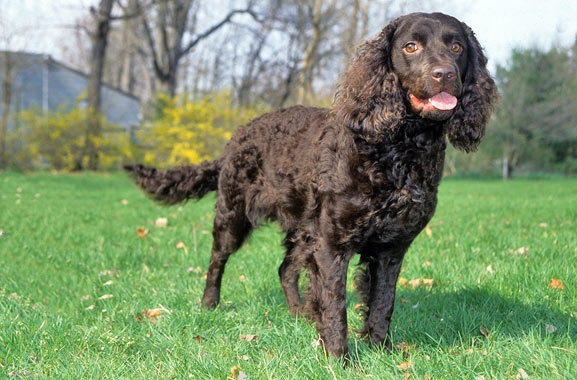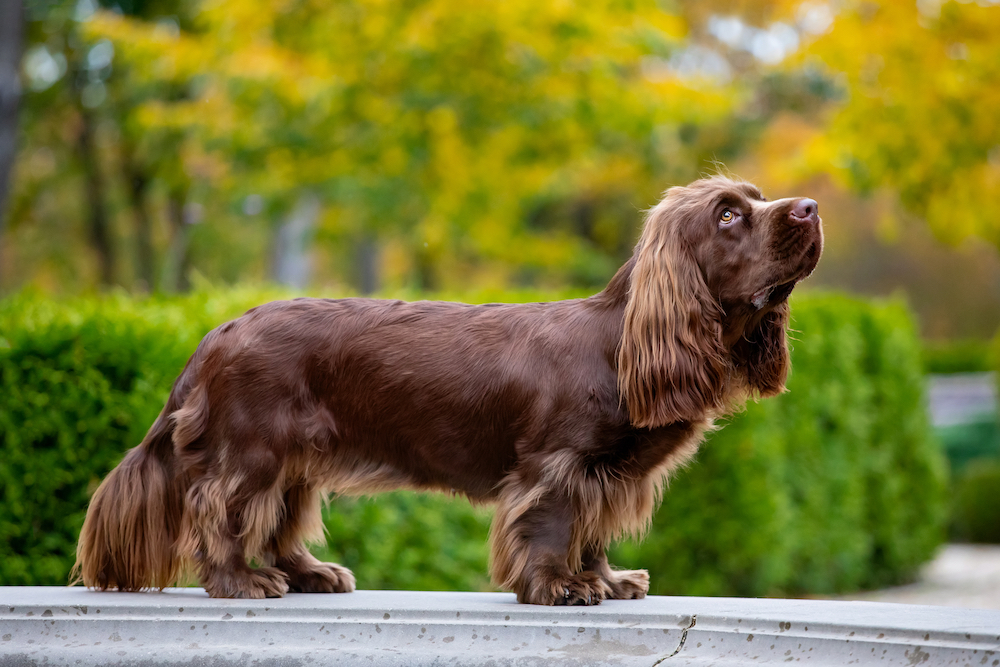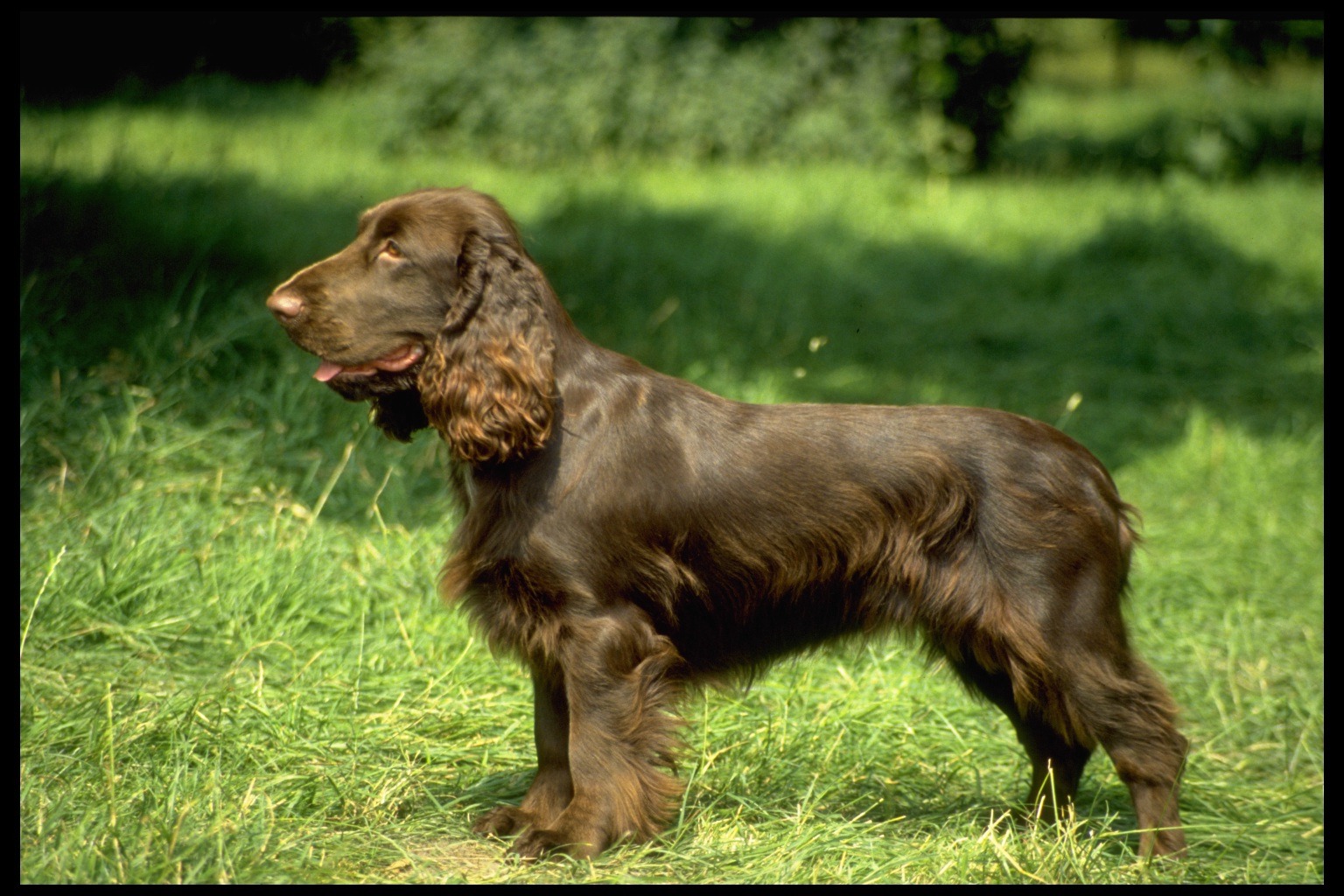The first time I watched an English Springer Spaniel working a field, I was completely mesmerized. The dog moved with incredible focus and joy, nose to the ground, tail wagging furiously, periodically springing up (hence the name!) to flush birds from their hiding places. It was like watching poetry in motion—a perfect example of a dog doing exactly what it was bred to do. But what really struck me was how this same dog, an hour later, was calmly curled up with the family children, gentle as could be. That incredible versatility is what makes the English Springer Spaniel so special.
Here at pawtrix.wiki, we’re passionate about helping you find your perfect canine match, and English Springer Spaniels deserve serious consideration. Whether you’re an active outdoors enthusiast, a family seeking a devoted pet, or even someone looking for a working dog, the “Springer” might just be your ideal companion.
These medium-sized sporting dogs combine athletic ability, intelligence, and genuine affection in a versatile package that adapts to various lifestyles. They’re substantial without being large, energetic without being hyperactive (mostly!), and trainable without being robotic. They represent a wonderful balance of many desirable canine traits.
So grab your favorite beverage, get comfy, and let’s dive into everything you need to know about English Springer Spaniels—from their rich hunting heritage to what it’s really like sharing your home with these enthusiastic, loving companions. By the end, you’ll understand why Springers have captured the hearts of families and sportsmen alike for generations.
The Rich Heritage: From Medieval Game Finders to Modern Companions
English Springer Spaniels have a fascinating history that spans centuries, evolving from specialized hunting dogs to the versatile companions we know today.
Ancient Spaniel Origins
The spaniel family of dogs is one of the oldest types of hunting dogs, with references dating back to the 1300s. These dogs were developed for flushing game birds—causing them to “spring” into flight so hunters could catch them with nets (and later, shoot them). The term “spaniel” likely comes from “espagnol,” reflecting the belief that these dogs originated in Spain before becoming popular throughout Europe.
For centuries, all spaniels were simply divided by function rather than distinct breeds. Larger spaniels that worked in the field were called “field spaniels” or “springer spaniels” (for their ability to spring game), while smaller ones that specialized in hunting woodcock were called “cocking spaniels” (later shortened to “cocker spaniels”).
The Birth of a Distinct Breed
It wasn’t until the 19th century that spaniels began to be developed as separate breeds. The English Springer Spaniel was officially recognized as distinct from other spaniels by the English Kennel Club in 1902, though the type had existed for much longer. The American Kennel Club followed suit in 1910.
Interestingly, English Springers and English Cocker Spaniels were originally born in the same litters—the larger puppies became Springers, while the smaller ones became Cockers. Only through selective breeding did they eventually develop into completely separate breeds with their own standards.
The Field/Show Split
Perhaps the most significant development in the breed’s recent history has been the divergence between “field” (or “working”) lines and “show” (or “bench”) lines. Beginning in the early 20th century, breeders began selecting dogs for either field work or conformation showing, leading to increasingly different types:
- Field-bred Springers tend to be lighter-built, with shorter coats, more athleticism, and higher energy levels
- Show-bred Springers typically have heavier bone, more profuse coats, more exaggerated features, and somewhat calmer temperaments
Today, these two types look noticeably different, though they remain the same breed. Field Springers focus on hunting ability, while show Springers emphasize the breed standard for appearance. Some breeders work to maintain “dual-purpose” lines that can succeed in both arenas, preserving the original versatile nature of the breed.
Despite these differences, all English Springer Spaniels maintain the core traits that have made them beloved companions and working dogs for centuries: intelligence, trainability, athleticism, and genuine affection for their people.
The Springer Look: Athletic Elegance
English Springer Spaniels have a distinctive appearance that combines functional athleticism with a certain natural elegance. Their look clearly reflects their purpose as versatile hunting dogs built for endurance and work in varied terrain.
Size and Structure: Medium Perfection
Springers hit a sweet spot in terms of size:
- Males stand 19-21 inches at the shoulder, weighing 45-55 pounds
- Females are 18-20 inches tall, weighing 35-45 pounds
- Overall impression is of medium size, compact build, and obvious strength
- Well-balanced proportions with height approximately equal to length
- Deep chest for stamina and strong, muscular legs for endurance
This size makes them substantial enough for serious field work but not so large as to be cumbersome in the home or field. They’re built for endurance rather than speed, with every aspect of their structure designed to allow them to work tirelessly in various terrains.
The Show vs. Field Appearance
As mentioned earlier, there are significant differences between show and field lines:
- Show Springers typically feature:
- More abundant coat with pronounced feathering
- Heavier bone structure and substance
- More pendulous ears with longer furnishings
- More pronounced stop and dome to the head
- Often slightly larger and heavier overall
- Field Springers typically feature:
- Lighter, shorter coat with minimal feathering
- Leaner, more athletic build
- Lighter bone structure for greater agility
- Often more pronounced ticking in white areas
- Less exaggerated head features
Both types have their admirers, and the choice often depends on whether you’re more interested in field activities or prefer the more classic “Springer look” of show lines. Dual-purpose Springers fall somewhere in between.
Coat and Colors: The Classic Spaniel Look
The Springer coat is weather-resistant and designed for protection in rough cover:
- Medium length, flat or wavy, never curly
- Moderate to heavy feathering on ears, chest, legs, and belly
- Dense undercoat for weather protection
- Requires regular grooming to prevent mats and tangles
The breed comes in several color patterns:
- Liver and white
- Black and white
- Either of the above with tan points (tricolor)
- Occasionally seen in solid liver or black (though less common)
White is typically present on the chest, face, and often as a blaze on the head. Many Springers also have ticking (small flecks of color) in the white areas of their coat.
The Expressive Face
Perhaps the most endearing aspect of the Springer’s appearance is their face:
- Medium-length muzzle with strong jaw
- Kind, alert expression with medium-sized eyes
- Eye color harmonizes with coat color (dark hazel or brown with liver, brown or black with black)
- Long, lobe-shaped ears set in line with the eyes
- Overall expression combines alertness with gentleness
It’s hard to resist a Springer’s face—those expressive eyes seem to communicate directly with you, often showing an eagerness to please that makes them such rewarding companions. The breed standard describes the expression as “alert, kindly and trusting,” which perfectly captures the essence of a good Springer’s character.
The Springer Personality: Enthusiasm Personified
If I had to describe English Springer Spaniels in one word, it would be “enthusiastic.” These dogs approach life with a joyful energy that’s absolutely contagious. But there’s much more to the Springer personality than just enthusiasm.
The Devoted Family Dog
Springers form deep, lasting bonds with their people:
- Genuinely affectionate and demonstrative with their families
- Thrive on human interaction and inclusion
- Generally excellent with children when properly socialized
- Adaptable to family life and routines
- Want to be where you are, doing what you’re doing
These are not dogs that do well relegated to the backyard or kept separate from family life. They want—and need—to be involved in daily activities. Many Springer owners joke that they never go to the bathroom alone again after getting their dog, as these velcro companions often follow their people from room to room.
The Working Temperament
As hunting dogs, Springers have distinct work-related traits:
- Strong prey drive and hunting instincts
- Excellent scenting ability
- Natural retrieving tendencies
- High energy level and stamina
- Strong desire to please their handler
These working traits translate well to various dog sports and activities, even for pets who never hunt. Their desire to work with humans makes them highly trainable for everything from competitive obedience to therapy work. They need mental as well as physical exercise to truly thrive.
Intelligence and Trainability
Springers combine intelligence with a genuine desire to please:
- Quick learners who respond well to positive methods
- Eager to understand what you want from them
- Excellent problem-solving abilities
- Thrive with consistent, reward-based training
- Can be sensitive to harsh correction
This combination makes them highly trainable, though they can occasionally display a stubborn streak or selective hearing—especially if they catch an interesting scent! They do best with clear, consistent expectations and positive reinforcement that makes training feel like a game rather than a chore.
Exercise Needs: The Active Athlete
Make no mistake—Springers need regular, vigorous exercise:
- At least 60 minutes of active exercise daily
- Benefit from both physical and mental challenges
- Excel at activities like retrieving, swimming, and hiking
- Need opportunities to run off-leash in safe areas
- Can become destructive or anxious without adequate exercise
Their energy level is no joke, particularly in field-bred lines. These dogs were developed to work tirelessly all day in the field, and that stamina doesn’t disappear just because they live in pet homes. Without proper outlets for their energy, Springers can develop problem behaviors like excessive barking, digging, or chewing.
The good news is that a well-exercised Springer typically settles well in the home. They do have an “off switch”—but you have to earn it through meeting their exercise needs first!
Show vs. Field Temperament
As with appearance, there are some general temperament differences between show and field lines:
- Show-bred Springers typically:
- Have somewhat lower energy levels
- May be slightly calmer in the home
- Often display less intense prey drive
- Can be more dependent on human companionship
- Field-bred Springers typically:
- Show higher energy and more intensity
- Have stronger hunting/prey drives
- May be more independent
- Often require more exercise and mental stimulation
These are generalizations, and individual dogs vary widely. Many show Springers maintain strong working abilities and high energy, while many field Springers are wonderful, calm family companions in the home. The key is matching the individual dog’s temperament to your lifestyle and expectations.
Living With a Springer: The Practical Side
Beyond their charming personalities and versatile abilities, what’s it actually like to share your home with an English Springer Spaniel? Let’s get practical about day-to-day life with these energetic companions.
Exercise: More Than Just a Walk Around the Block
I can’t emphasize this enough: Springers NEED regular, vigorous exercise. This isn’t just a “nice to have”—it’s essential for their physical and mental wellbeing. Ideal exercise includes:
- Long walks or hikes (30-60 minutes minimum daily)
- Off-leash running in secure areas
- Swimming (most Springers love water)
- Retrieving games that engage their natural instincts
- Scent games that challenge their nose
- Interactive play with humans and other dogs
The best exercise engages both their body and mind. Simply letting them out in the yard alone isn’t sufficient—they need interaction and structured activities, not just physical space. Mental stimulation through training, puzzle toys, and games is equally important.
My neighbor’s Springer, Bailey, gets a 45-minute walk every morning, a midday play session with puzzle toys, and evening fetch games or training. On weekends, she goes for hikes or swimming. This routine keeps her balanced and well-behaved—when they had to reduce her exercise after a family emergency, they quickly saw the difference in her behavior.
Grooming Requirements: Moderate But Necessary
That beautiful coat requires regular maintenance:
- Brushing 2-3 times weekly to prevent mats (more during shedding seasons)
- Special attention to feathering on legs, ears, and belly
- Regular checking and cleaning of ears (prone to infections)
- Occasional trimming around feet, ears, and sanitary areas
- Full grooming every 8-12 weeks, either professionally or at home
Many pet Springers are kept in a shorter “sporting clip” rather than full show coat, which reduces (but doesn’t eliminate) grooming needs. Their coats naturally pick up burrs, twigs, and debris during outdoor adventures, so post-activity inspection is important.
Springers do shed, with seasonal “blowing coat” periods where shedding increases. Regular brushing helps manage this, but be realistic—you’ll find some dog hair around your home. They’re not suitable for people seeking a truly non-shedding breed.
Training Approach: Consistency is Key
Successfully training a Springer Spaniel requires understanding their learning style:
- Start early—puppyhood is crucial for establishing good habits
- Use positive reinforcement with rewards they value (usually food or play)
- Keep sessions short and fun to maintain interest
- Be consistent with commands and expectations
- Provide clear boundaries while avoiding harsh methods
Springers typically house-train fairly easily with consistent scheduling and positive reinforcement. Their intelligence means they catch on quickly to basic obedience commands, though their enthusiasm sometimes overrides their training in exciting situations.
Early and thorough socialization is particularly important. Exposing your Springer puppy to various people, animals, environments, and situations during their formative months helps prevent timidity, fearfulness, or inappropriate reactions in adulthood.
Health Considerations: Understanding Breed Tendencies
English Springer Spaniels are generally healthy dogs with a lifespan of 12-14 years, but like all breeds, they have some health concerns to be aware of:
- Hip and elbow dysplasia (joint malformations)
- Progressive retinal atrophy and other eye conditions
- Ear infections (common due to their drop ears)
- Phosphofructokinase deficiency (a metabolic disorder)
- Rage syndrome (a rare but serious behavior disorder)
Working with a reputable breeder who conducts appropriate health testing is the best way to reduce these risks. Regular veterinary care, maintaining appropriate weight, and being vigilant about ear cleaning can prevent many common Springer health problems.
Rage syndrome deserves special mention, as it’s often associated with this breed. It’s a rare condition where dogs exhibit sudden, extreme aggression without apparent cause. While frightening, it’s important to note that this is very uncommon and generally has a genetic component. Responsible breeding practices have significantly reduced its incidence.
Home Setup: Springer-Proofing
Setting up your home for Springer success includes:
- Secure fencing—these hunting dogs will follow interesting scents
- Designated sleeping areas with comfortable bedding
- Durable toys that withstand enthusiastic play
- Storage solutions for items you don’t want chewed
- Easy-to-clean surfaces for muddy paws after adventures
While Springers can adapt to various living situations, from rural properties to suburban homes, they do need some space. A small apartment without nearby exercise areas would be challenging, though not impossible with a highly committed owner.
Perhaps most importantly, they need a home environment where they’re included in family activities. These people-oriented dogs don’t thrive when isolated or left alone for extended periods.
Springers and Families: Making the Perfect Match
English Springer Spaniels have well-deserved reputations as excellent family dogs, but like any breed, they fit better with some family situations than others.
Springers and Children
Generally speaking, Springers and kids are a wonderful match:
- Patient and gentle with children they know
- Energetic enough to keep up with active kids
- Sturdy enough to handle some roughhousing (within reason)
- Typically form strong bonds with “their” children
- Protective without aggression
That said, proper supervision is always important. Adult Springers can sometimes accidentally knock over very small children in their enthusiasm, and young Springer puppies can be quite mouthy during play. For these reasons, families with slightly older children (school-age rather than toddlers) often have the easiest transition.
As with any dog, children should be taught appropriate ways to interact respectfully with their canine family member. When raised together with clear boundaries, Springers often become children’s devoted playmates and protectors.
Multi-Pet Households
Springers typically integrate well into homes with other pets:
- Usually get along well with other dogs
- Can learn to live peacefully with cats, especially when raised together
- May have prey drive toward small animals like rabbits or hamsters
- Benefit from proper introductions and supervision initially
Their social nature means most Springers enjoy having animal companions, though as with any multi-pet situation, proper introductions and supervision are important. Their hunting background means they may chase smaller animals, so households with small pets should exercise appropriate caution and training.
Ideal Family Situations
Springers tend to thrive in these family environments:
- Active families who enjoy outdoor activities
- Households with secure yards or nearby exercise areas
- Families who want an involved, engaged canine member
- Homes where someone is present much of the day
- Families committed to meeting exercise and training needs
They may be less ideal for:
- Very busy families who cannot provide adequate exercise
- Households where the dog would be alone for extended periods
- People seeking a calm, low-energy companion
- Families without time for training and socialization
- Those unwilling to deal with some shedding and grooming
The happiest Springers are those who are treated as full family members and included in daily activities and routines. Their desire for human companionship means they don’t do well when excluded or isolated for long periods.
Finding Your Springer: Making a Responsible Choice
If you’ve decided an English Springer Spaniel might be the perfect addition to your family, there are several paths to consider for finding your new companion.
Working with Reputable Breeders
Working with a responsible breeder is often the most reliable way to get a Springer puppy with sound health and temperament:
- Look for breeders who perform health testing (hips, eyes, PFK, etc.)
- Decide whether you want show lines, field lines, or dual-purpose lines
- Ask about socialization practices for puppies
- Expect to be thoroughly interviewed about your home and expectations
- Be prepared to wait for the right puppy—good breeders don’t always have puppies available immediately
Reputable breeders typically belong to national or regional English Springer Spaniel clubs and participate in some form of competition with their dogs (conformation shows, field trials, obedience, etc.). The English Springer Spaniel Field Trial Association (ESSFTA) is an excellent resource for finding breeders committed to the breed’s wellbeing.
Expect to pay $1,200-$2,500 for a well-bred Springer puppy from health-tested parents, depending on your location, the breeder’s program, and whether the puppies come from show or field lines. This higher initial investment typically pays dividends in better health, temperament, and support throughout the dog’s life.
Rescue and Adoption
Rescue can be a wonderful way to find an English Springer Spaniel:
- Many Springers end up in rescue through no fault of their own
- Adult dogs often come with known personalities and some training
- Adoption fees are typically much lower than purchasing a puppy
- Many rescues provide initial veterinary care and assessment
- The satisfaction of providing a deserving dog with a loving home
Springer-specific rescue organizations exist across the country, and general shelters and rescue groups occasionally have Springers or Springer mixes available. The ESSFTA also maintains rescue contacts who can help match you with a dog in need.
Be aware that some rescue Springers may need extra patience, training, or medical attention initially, especially if they came from neglectful situations. However, these dogs often blossom remarkably in loving homes and make incredibly devoted companions.
Show vs. Field: Making the Right Choice
One of the most important decisions when seeking a Springer is whether to choose a dog from show lines, field lines, or dual-purpose lines. Consider:
- Show-bred Springers may be better suited for families seeking a somewhat calmer pet with the classic Springer look
- Field-bred Springers might be perfect for active individuals planning hunting or dog sports
- Dual-purpose lines offer a middle ground, maintaining both working ability and breed type
Be honest with breeders about your lifestyle and expectations. A good breeder will help guide you toward the right type of Springer for your situation, and may even recommend a different breed entirely if they don’t think their dogs will be a good match for your home.
Remember that individual temperament varies widely within lines, and a good breeder will match specific puppies to homes based on personality, not just on whether you want a “show dog” or “field dog.”
Conclusion: Is an English Springer Spaniel Right for You?
After our journey through the world of English Springer Spaniels, you might be wondering if this energetic, versatile breed is the right match for your lifestyle and home. Let’s wrap up with some final thoughts.
English Springer Spaniels offer an incredible combination of athleticism, intelligence, and genuine affection. Their versatility allows them to excel in multiple roles, from hunting companions to family pets, therapy dogs to competitive sport partners. Their expressive eyes and enthusiastic approach to life create rewarding relationships with their human families.
However, they’re not the perfect breed for everyone. Their significant exercise needs require commitment, their training demands consistency, and their people-oriented nature means they don’t do well with extended periods alone. They require regular grooming and shed moderately throughout the year.
The ideal English Springer Spaniel owner is someone who:
- Enjoys daily outdoor activities and will include their dog
- Appreciates an intelligent, trainable companion
- Wants an affectionate, involved canine family member
- Has the time for regular exercise, training, and grooming
- Understands the difference between show and field lines
If you’re considering a Springer, take time to meet adult dogs from both show and field lines, talk to experienced owners, and honestly assess whether your lifestyle and expectations match what these dogs need. Remember that choosing a dog is a commitment for the entirety of that dog’s life—ideally 12-14 years for a healthy Springer.
Whether you ultimately welcome a Springer into your home or decide another breed is a better fit, taking the time for thoughtful consideration is the most responsible approach to dog ownership. Every dog deserves a home where they’re understood, appreciated, and properly cared for throughout their life.
For those who do choose an English Springer Spaniel and commit to meeting their needs, the rewards are substantial—an enthusiastic, loving companion who approaches life with joy and devotion, who shares your adventures with boundless energy, and whose expressive eyes remind you daily of the special bond between humans and dogs. In the right home, a Springer isn’t just a pet—they’re a treasured family member who enriches life in countless ways.
Here at pawtrix.wiki, we believe in matching the right dog with the right home. If the English Springer Spaniel’s unique combination of athleticism, intelligence, and affection speaks to you, you might have found your perfect canine companion—a versatile sporting dog with a heart as big as their enthusiasm for life.
